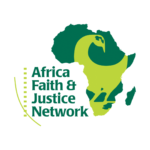By Alyse Martin
Arms’ trafficking in Africa is an issue that should be monitored. Wars in African countries are fought with the illicit small arms that are smuggled in from across the globe. According to the UN, access to illegal arms in African nations, “fuels conflict, contributes to poverty, and stalls development.”
The use of illicit arms is prevalent in many African societies. The rich cultures of these African nations have been overshadowed by the armed conflicts that have taken over. According to Rachel Stohl, an expert in illicit arms trafficking, of all the small arms that are globally in circulation, 59% of them are owned by civilians; and about 500,000 people are killed each year by these weapons.
South Africa is one of the few nations in Africa which manufactures arms; which begs the question, where are all of these arms coming from? From developed Western nations. In 2002, 5,000 AK-47’s from Yugoslavia’s army stock made their way to Nigeria and small arms from Ukraine were smuggled into the Ivory Coast. The United States provided weapons to the nations in Africa’s Great Lakes region and the Horn of Africa as a strategy to fight the Cold War. Recently, it was revealed that France armed Libyan rebels.
In the late 1990’s the U.S. and the European Union signed the U.S.-E.U. Statement of Common Principles on Small Arms and Light Weapons. In this agreement they made plans to create working groups, provide assistance, and support the UN’s mandates and sanctions. But now, we can see that this policy, along with others, is not enough in the struggle to control arms trafficking.
In 2000, the Great Lakes region and countries in the Horn of Africa signed a declaration that established the Regional Centre on Small Arms and Light Weapons in Nairobi, Kenya. This office’s mission is to “To coordinate action against Small Arms and Light Weapons proliferation in the Great Lakes region and Horn of Africa.” By establishing this center, these nations have demonstrated their initiative to band together and build a stronger force against arms trafficking. These countries are expected to “harmonize” their laws on arms trafficking. This regional cooperation and individual nation’s efforts to implement regional agreement are big steps toward controlling arms trafficking but there is much more that needs to be done.
Matt Schroeder, director of the Arms Sales Monitoring Project at the Federation of American Scientists, and Guy Lamb, senior research fellow with the Arms Management Programme at the Institute for Security Studies, give four actions that they believe would reduce illicit small arms in Africa:
1. Expand foreign aid programs that target illicit arms trade.
2. Crack down on violations of UN arms embargo.
3. Strengthen national arms control legislation
4. Address the factors that fuel the illicit small arms economy.
These suggestions are not out of reach and arms trafficking can be lessened.Monitoring arms trafficking is one of the big steps toward addressing the issue of security, and eventually democracy and development, in Africa. AFJN is a supporter in the fight for arms control and the promotion of peace in Africa. For more information on arms control and what is currently being done about it, please visitwww.controlarms.org .
